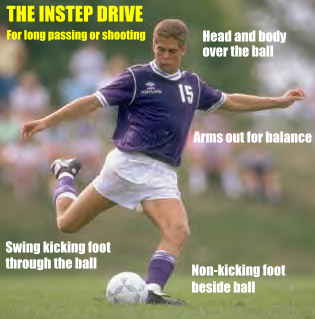FOOTBALL
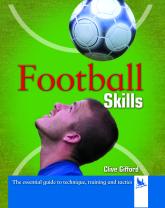
Improve Your Game
“Football is a game you play with your brains. You have to be in the right place at the right moment, not too early, not too late.”
Johann Cruyff
So much of football, from awareness of other players to penalty taking nerves, is all in the head. You can become a better footballer by learning about the mental side of the football, the Brain Game.
Of course, having the world’s best footballing brain is not much use without the key skills and techniques. So, either side of the 2006 World Cup, we will be building up a library of handy skills tips to help you get the most out of your game.
Small-Sided Games
Thereís nowhere to hide when playing five or six-a-side! And thatís especially on a pitch which features walls instead of sidelines. Small-sided games are brilliant ways to hone many of your football skills particularly your passing, shooting and control skills. Here are our top five skills pointers for small-sided games.
 Five A Side Skills
Five A Side Skills
1. Use the walls to beat a player by playing a one-two pass with the wall instead of another player (scroll down for wall pass).
2. Keep the ball down at all times. Your first touch should be excellent to get the ball under control as quickly as possible.
3. Make a pass and immediately move off to provide a return pass. With space so limited, quick, intelligent movement is the key to success.
 4. If none of your team-mates are free and an opposing player threatens, send the ball down the wings into the corner to relieve the pressure.
4. If none of your team-mates are free and an opposing player threatens, send the ball down the wings into the corner to relieve the pressure.
5. In defence, all players should be between the ball and their goal. In attack, the four outfield players have to be constantly on the move.
First Touch Tactics
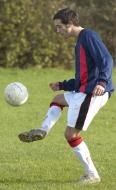 When the ball flies towards you, your first thought should be to get it under control. Cushioning helps slow the ball down and gets it at your feet ready for your next move. To cushion the ball, keep your body relaxed and as the ball arrives, move the part of your body that makes contact with the ball back or down in the direction the ball is moving. This helps slow the ball and stops it bouncing away.
When the ball flies towards you, your first thought should be to get it under control. Cushioning helps slow the ball down and gets it at your feet ready for your next move. To cushion the ball, keep your body relaxed and as the ball arrives, move the part of your body that makes contact with the ball back or down in the direction the ball is moving. This helps slow the ball and stops it bouncing away.
You can cushion the ball with your thigh, chest, the top of your boot or using the side of your foot. For this sidefoot cushion, get your weight on your standing foot, using your arms for balance. As the ball arrives, lift your leg and aim to bring the ball down with the side of your foot. The ball should drop to the ground in front of you.
Skills: Coming For Crosses
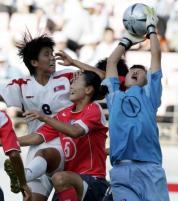 If you're a budding goalkeeper, you need to be agile, able to concentrate hard and communicate well with your defenders. What you will also need is bravery when taking a high ball in your penalty area. Your area is likely to be crowded with opponents as well as team-mates defending the cross. If you go for a ball, let them know with a clear, loud shout. Look to meet the ball at the top of your jump and focus on the ball not the other players. And remember the three B's when going for the ball:
If you're a budding goalkeeper, you need to be agile, able to concentrate hard and communicate well with your defenders. What you will also need is bravery when taking a high ball in your penalty area. Your area is likely to be crowded with opponents as well as team-mates defending the cross. If you go for a ball, let them know with a clear, loud shout. Look to meet the ball at the top of your jump and focus on the ball not the other players. And remember the three B's when going for the ball:
- * Be Bold
- * Be Decisive
- * Be First!
Turn and Shoot
A swift turn followed by a quick accurate shot can result in a goal inside the penalty area. You need good close control and an understanding of where the goal is as you turn. A great drill to work on this involves a friend and a wall you can chalk up a full size goal on. Now, divide it into four equal rectangles and mark them 1 to 4 or A to D. Stand 10-15m away from the goal. Your friend passes you the ball on the floor and as it reaches you, they shout out one of the rectangles.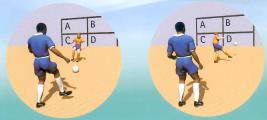 You now must collect the ball, swivel on one foot and hit an instant shot aiming for that rectangle. Concentrate on accuracy over power in your shot and quick, smooth close control. After ten or fifteen shots, swap roles.
You now must collect the ball, swivel on one foot and hit an instant shot aiming for that rectangle. Concentrate on accuracy over power in your shot and quick, smooth close control. After ten or fifteen shots, swap roles.
Skills: Top Tip For Power Headers
The power header is used to drive the ball forward a long distance.
Many players make the mistake of whiplashing their head forward to hit the ball. They often lose control and may get a headache! Power is best generated by driving your whole body forward through the ball, keeping your neck relatively firm as you meet it.

This player leaps off his front foot, arches his body and
then drives his upper body forwards to meet the ball. See
how he thrusts his arms back to help drive himself forwards.
Brain Game: Boot Camp
 Good football boots that fit you and are looked after make a big difference to your game. You'll run many kilometres during a game (or you should) and it's your feet that hit the ground every step. Badly-fitting or poorly-kept boots can give your sore feet, blisters and worse, play a part in ankle and tendon injuries.
Follow our four tips to buy better boots:
Good football boots that fit you and are looked after make a big difference to your game. You'll run many kilometres during a game (or you should) and it's your feet that hit the ground every step. Badly-fitting or poorly-kept boots can give your sore feet, blisters and worse, play a part in ankle and tendon injuries.
Follow our four tips to buy better boots:

- *Try boots on with what you would wear in a match, your football socks. Make sure the boots actually fit you well with plenty of support around your ankles.
- *Try to choose a good quality, soft leather so you can feel the ball better. Look for a wide tongue that cannot slip to one side.
- *Make sure the boot's sole has some flexibility. As you walk or run, your foot bends. A boot that doesn't bend with you is going to cause problems.
- *Forget the hype and be honest. You may like the colour, stylings or logo on one pair of boots but do they honestly fit better than the other pairs? No one checks out your boots during a game, but they do note your skill and your impact on a game. Ill-fitting boots won't help you.
Brain Game: The Sound Of Silence
Watch the Premiership, MLS or Serie A on TV and count the number of times famous stars of the game argue, plead and beg with the referee. As you do this, also note down the number of times that the pleading works and the ref changes their decision. We reckon that the latter number will be…
…A Big FAT Zero
Referees rarely reverse their decisions and, when they do, it is usually due to the input of the referee’s assistants not arguing  players. Never argue with the ref. Apart from wasting valuable breath you need for the match, you may get a yellow card for your troubles. And there’s another
risk. You could leave yourself out of position and at the mercy of the oppo. taking a quick free kick. Accept the ref’s decision and get your head and body back into the game.
players. Never argue with the ref. Apart from wasting valuable breath you need for the match, you may get a yellow card for your troubles. And there’s another
risk. You could leave yourself out of position and at the mercy of the oppo. taking a quick free kick. Accept the ref’s decision and get your head and body back into the game.
Skills: Five-A-Side Wall Pass
Five-a-side football has boomed since Uruguayan Juan Carlos Ceriani drew up pioneering rules in 1930. Many games are played on a pitch surrounded by a wall which keeps the ball in play. One-two passes, also known as wall passes, often see one player pass to another and
then receive a quick return pass. In five-a-side you can work on your one-two passing, using a side wall as an extra team-mate. 
With enough space between the defender and the wall, the on-ball player places a firm pass onto the wall and collects it on the other side. Speed off the mark as soon as the pass leaves the foot is essential to wrong foot the defender and gather the ball on the other side.
Brain Game – A Poor Start
 Ever joined a new team? It can be a nerve-wracking experience. Some new players have a dream start but many struggle to settle. Don’t criticise them when a pass is hit a short or they don’t follow your attacking move. Most of all, don’t write them off as someone barely worth passing to. What they actually need are bags of time on the ball to get used to how you all play. Try
to work with them in training and during practice games. Split your time between giving them encouragement and learning how they play.
Ever joined a new team? It can be a nerve-wracking experience. Some new players have a dream start but many struggle to settle. Don’t criticise them when a pass is hit a short or they don’t follow your attacking move. Most of all, don’t write them off as someone barely worth passing to. What they actually need are bags of time on the ball to get used to how you all play. Try
to work with them in training and during practice games. Split your time between giving them encouragement and learning how they play.
Skills: Hitting An Instep Drive
Use the instep part of your foot (where the boot laces lie) to hit long passes. To hit a relatively high, long pass, approach the ball at a slight angle or straight on. Plant your non-kicking foot to the side of the ball. Point your kicking foot downwards and aim to strike the middle of the ball with your boot laces. Your kicking foot should follow through, pointing to the target. Practise hitting instep drives with a friend by hitting 20-40m passes back and forth to each other.
